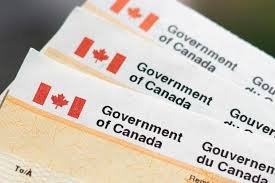If you have bought or substantially renovated a home in Canada, you might be eligible for the GST/HST New Housing Rebate.
This rebate allows individuals to recover part of the GST or the federal portion of HST paid on a new or renovated home that will be used as a primary residence.
This guide walks you through eligibility, which form to use, what documentation is needed, and how to submit your rebate application.
What is the GST New Housing Rebate and who qualifies?
The GST New Housing Rebate (sometimes called the HST New Housing Rebate, depending on your province) is a government program managed by the Canada Revenue Agency (CRA).
It applies if you are an individual (not a corporation or partnership) and one of these situations applies:
- You purchased a new or substantially renovated house (including modular homes, floating homes) from a builder to live in as your primary place of residence.
- You built or substantially renovated your house (or had someone do so) on land you own or lease.
- You purchased a share in a co-operative housing corporation where the co-op paid the GST/HST on a new or renovated home.
There are limits: the home must be used (or intended to be used) as a primary place of residence, and there are fair market value or purchase price ceilings (for example, if the total cost of home + land is too high, some rebates may be reduced or not available).
How to decide which rebate form to use for your situation
To apply for the GST New Housing Rebate, you must use the correct form depending on whether you bought from a builder or built/renovated the home yourself:
- If you purchased a new or substantially renovated house from a builder: use Form GST190, “GST/HST New Housing Rebate Application for Houses Purchased from a Builder.”
- If the house was owner-built or substantially renovated by you (or someone you hired), use Form GST191, “GST/HST New Housing Rebate Application for Owner-Built Houses,” along with the GST191-WS Construction Summary Worksheet.
If your home is in a province with HST and there’s a provincial rebate schedule (e.g., Ontario) you may also have to fill out a provincial rebate schedule form (like RC7191-ON in Ontario) where applicable.
What are the deadlines and price/fair market value limits?
To successfully apply, you must pay attention to deadlines and value limits:
- For homes purchased from a builder, there is usually a 2-year deadline after ownership is transferred to you to apply if the builder did not credit or pay the rebate directly.
- If the builder pays or credits the rebate to you, in many cases, you sign the application around closing or possession, and the builder sends the completed application to CRA.
- Fair market value/purchase price limits matter: if the home + land value is above a threshold (for example $450,000 in many provinces for the federal rebate), you might not qualify for a full rebate; in some provinces, you may still get the provincial rebate even if above the federal limit.
How to prepare your application: documents and forms
When applying, gather information and fill out the forms carefully:
- For builder-purchased homes: complete form GST190. If in Ontario (or other applicable province), also complete the provincial schedule form (e.g., RC7191-ON) if needed.
- For owner-built or substantially renovated homes: fill out GST191 and the GST191-WS worksheet.
- Provide accurate information about purchase price, land cost, dates of construction or substantial renovation, transfer/possession date, whether you are the first occupant, etc.
- Keep original invoices, documents, purchase and sale agreements, and proof of occupancy if CRA requests them. The CRA may audit claims, so you need records kept for six years.
How to calculate the rebate you’ll receive
Rebate calculation depends on several factors:
- The percentage of GST or the federal portion of HST you paid (rate depends on province).
- The purchase price or fair market value of the home and land. If above the limit, some or all of the federal part may be reduced or excluded.
- Application type (e.g. builder credits vs you filing directly) affects whether the builder pays or credits the rebate or whether you apply and wait.
Use the worksheets (GST190 or GST191-WS) to figure out the exact rebate.
These include calculation sections to fill in taxes paid, price, and the formula to compute the rebate.
How to submit your rebate application
Once your forms are filled out and documents gathered:
- If the builder has agreed to credit or pay the rebate to you, you (or the builder) sign and submit the relevant form. If the builder pays/credits, the builder may submit to CRA.
- If the builder did not credit/pay, you apply directly by sending your completed form(s) and any schedules to CRA yourself.
- Check that you are using the correct mailing address or CRA’s online service, if available for your region. The forms are available on the CRA website.
What to expect after you apply and how long it takes
After submitting the application:
- CRA may ask for proof of occupancy or supporting invoices if they were not included. Be ready to provide those.
- Keep in mind that CRA may audit your application. That’s why keeping records (invoices, contracts, etc.) for six years is required.
- Processing time can vary depending on CRA’s workload and whether your application is straightforward or requires extra review. The rebate is separate from your tax return, so tracking its status may be different.



